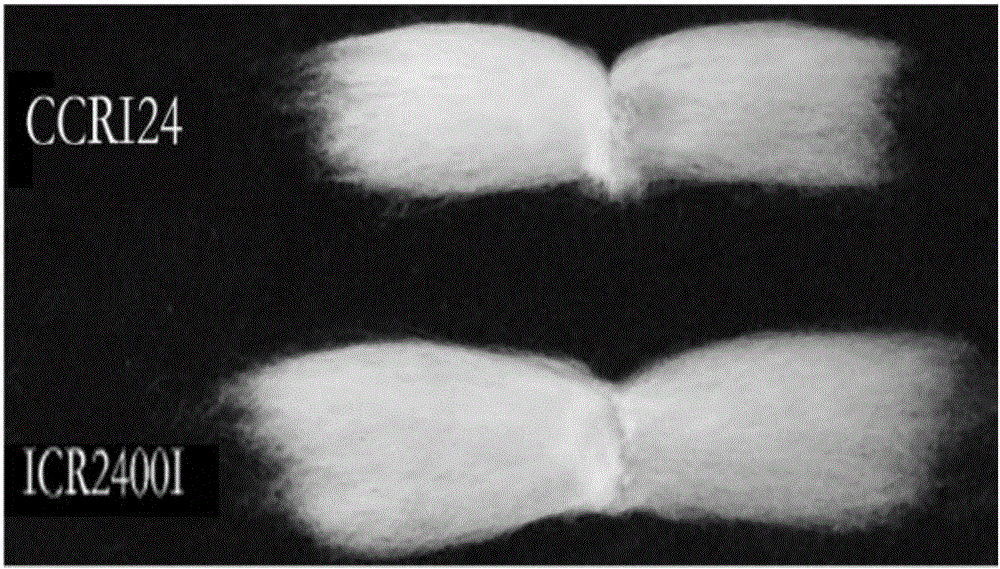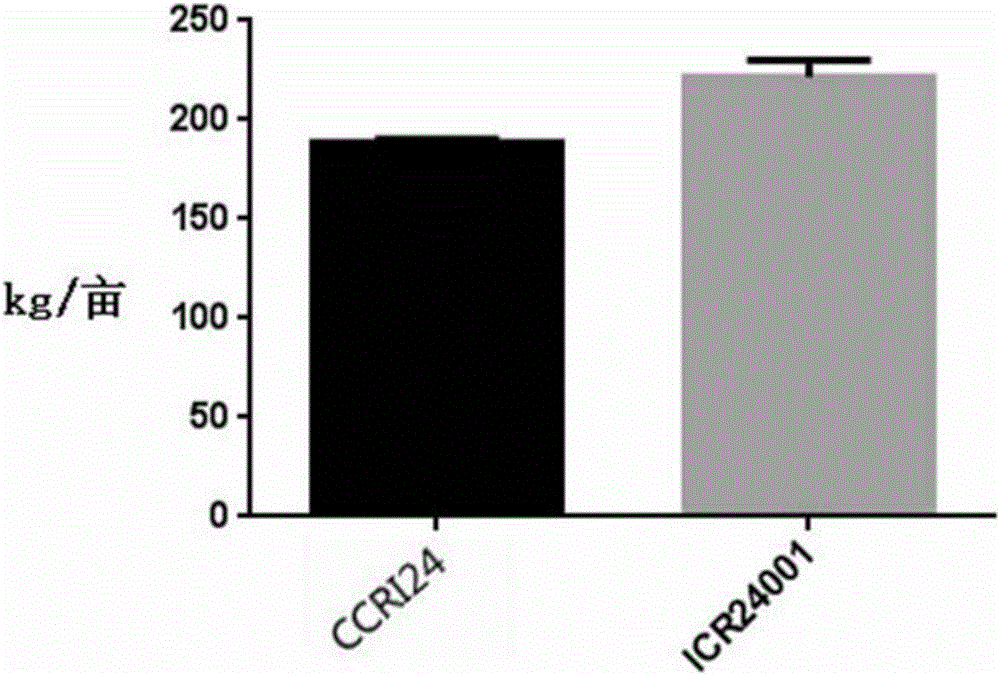Upland cotton transformation event ICR24001 and specificity identification method thereof
A cotton and transgenic technology, applied in the field of upland cotton transformation event ICR24001 and its specific identification, can solve the problems of small planting area, difficult aggregation of upland cotton yield traits, sea-island cotton fiber traits, and trait separation
- Summary
- Abstract
- Description
- Claims
- Application Information
AI Technical Summary
Problems solved by technology
Method used
Image
Examples
Embodiment 1
[0086] Embodiment 1, the acquisition of transgenic GhKCS2 cotton and the analysis of agronomic traits
[0087] 1. Obtaining of transgenic GhKCS2 cotton
[0088] 1. Construction of recombinant vector
[0089] The expression cassette A was inserted between the EcoRI and PstI restriction sites of the pCambia2300 vector (the plasmid was purchased from the BioVector Plasmid Vector Strain Cell Gene Collection Center under the NTCC Type Culture Collection Center, the article number is: Biovectorpcambia2300), and the pCambia2300 vector was maintained. Other sequences remained unchanged, and the recombinant vector (SEQ ID NO: 4) was obtained. The nucleotide sequence of the above expression cassette A is shown in the 234th-2974th nucleotides in Sequence Table 1. Expression cassette A comprises the promoter, GhKCS2 gene and NOS terminator from the CAMV35S of cauliflower mosaic virus successively from upstream; shown; the nucleotide sequence of the GhKCS2 gene is shown in the 1110-2699...
Embodiment 2
[0123] Example 2. Acquisition and identification of traits of ICR24001 breeding offspring and analysis of their agronomic traits
[0124] 1. Acquisition of traits in ICR24001 breeding offspring
[0125] 1. Hybridization
[0126] The pollen of the first cotton is removed by hand or human action in the afternoon before flowering, and the stigma of the flower is covered with a wax tube to prevent foreign pollen from contacting the stigma. When the pollen of the second cotton loosens in the next morning, pass Humans manually collect pollen from the second cotton and contact the pollen with the style or stigma of the first plant to complete the hybridization process. Wherein, when the first cotton is ICR24001 in the embodiment, the second cotton is other cotton, or the second cotton is ICR24001, and the first cotton is other cotton.
[0127] The hybrid bolls are harvested in the floc opening stage, and the cotton is naturally dried, ginned, and towed with concentrated sulfuric ac...
PUM
 Login to View More
Login to View More Abstract
Description
Claims
Application Information
 Login to View More
Login to View More - R&D
- Intellectual Property
- Life Sciences
- Materials
- Tech Scout
- Unparalleled Data Quality
- Higher Quality Content
- 60% Fewer Hallucinations
Browse by: Latest US Patents, China's latest patents, Technical Efficacy Thesaurus, Application Domain, Technology Topic, Popular Technical Reports.
© 2025 PatSnap. All rights reserved.Legal|Privacy policy|Modern Slavery Act Transparency Statement|Sitemap|About US| Contact US: help@patsnap.com



